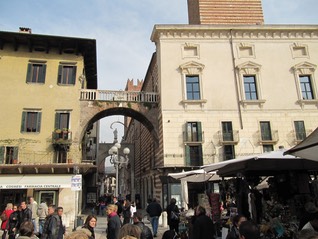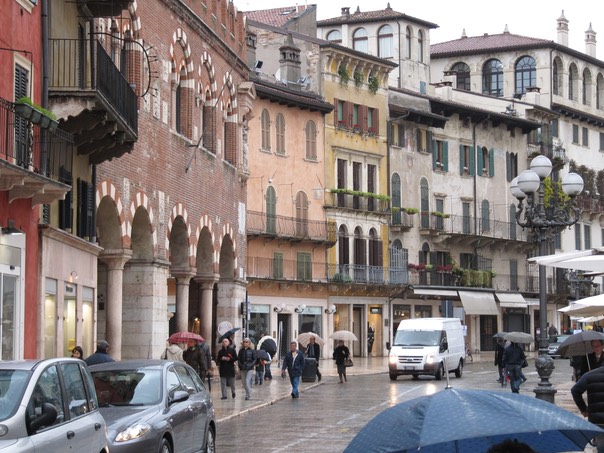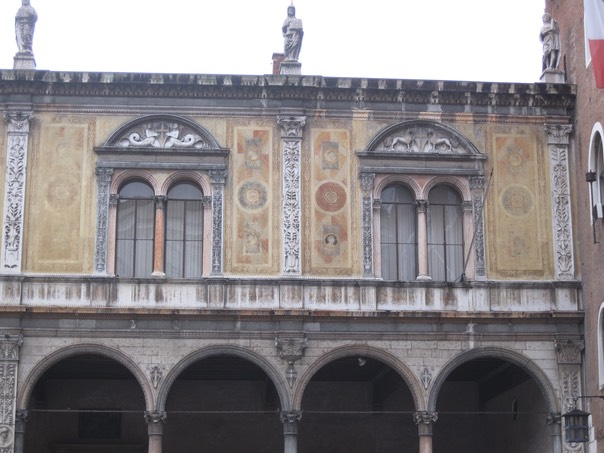
Can a city display charisma? Defined as "compelling attractiveness or charm that can inspire devotion in others" charisma requires more than a simple sprinkling of fashionability.
Strategically set on main routes from Rome, Genoa, and Venice, Verona early established itself as a truly classical Roman city with an amphi-theatre and large temple on the high bank of the river, and a Forum, Duomo and Roman Arena on the lower plain enclosed by the looping river. Laid out with a rectangular grid linking the Arena with the forum, now Piazza Delle Erbe, the centre still feels deceptively modern.
Verona prospered even after the fall of the Roman Empire when it became capital of the Ostrogoth and Longobard Dominions. During the 13th century the powerful Della Scala family added splendour to Verona with grand monuments, new bridges, extended fortified walls and gateways. By the 16th century military emphasis was superceded by merchant activity and Verona expanded with stylish town houses under the artistic and architectural guidance of Michele Sanmicheli.

The most significant architectural contribution to Verona by the Della Scala family was Castelvecchio (1355). A robust crenellated structure with covered towers and an integral bridge across the River it re-used part of the original city wall, but in the event its defences proved most useful against internal family feuds. During Mussolini's Italian fascism, these buildings were converted by Ferdinando Forlati for use as a museum. Forlati reconstructed towers and turned functional barracks into a 'late Gothic' style palace of culture.
Badly damaged in World War Two the buildings were again restored in 1958. This time, architect Carlo Scarpa brilliantly exposed original features throughout and peeled back some of the later pastiche allowing each iteration of the castle's history to be easily read. Internally bespoke mountings and plinths give each exhibit a distinctive home while presenting a timeless building.
Less absorbing but equally remarkable is Verona’s nearby Roman Arena. A Colluseum look-alike which, in-keeping with the more modest scale of Verona, has lost its upper levels. Throughout the nineteenth and twentieth century the Arena became renowned as a superlative Opera venue during summer months. With an audience capacity of around 20,000 it currently draws in excess of half a million visitors to the City each year.
Verona's focus and former Forum is around Piazza Delle Erbe. An irregular open space where frequent busy markets use neat in-built fold-up stalls. Nearby courtyards and squares, the largest being Piazza dei Signiori, offer contrasting tranquillity and an aristocratic settings for grand palaces and domestic residences.
The most famous and most visited address here is undoubtedly the thirteenth century Juliet's House which is thought to have belonged to the Capulets. Letters addressed to 'Romeo and Juliet', from around the world, still receive replies daily from volunteers which helps to consolidate Verona's reputation as the City of Love. “There is no world without Verona’s walls” William Shakespeare.

There is no evidence that Shakespeare ever visited Verona but the energy and will of its citizens throughout the ages to optimise each opportunity has created a dynamic magnetism. In choosing Verona as setting for three plays the City's 16th century charisma must have captivated Shakespeare, and his British audiences, as it still does for international Opera fans.
537 words.